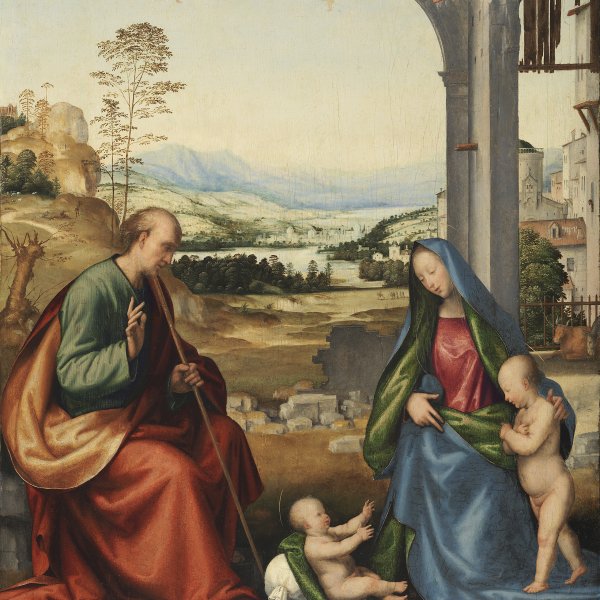Fra Bartolommeo (Baccio della Porta)
Baccio della Porta, known as Fra Bartolommeo, was born in 1472 in Florence. In 1485 he entered the workshop of Cosimo Rosselli as an apprentice. Berenson maintained that Rosselli’s assistant, Piero di Cosimo, was responsible for Della Porta’s training, transmitting to the young painter his interest in German art and the technique of the Flemish painters. According to Vasari it was also in Rosselli’s studio that Della Porta met the painter Mariotto Albertinelli with whom he became friends and with whom he would work years later in a partnership. Their first documented collaboration is the Annunciation for Volterra cathedral of 1497 and they worked together on various projects until 1513, the year when their “compagnia” was dissolved. Della Porta’s works from the late 1490s such as The Virgin and Child and Saint John the Baptist (New York, The Metropolitan Museum of Art) and The Adoration (Rome, Galleria Borghese) reveal his profound interest in the art of Leonardo in their composition and tonality.
In 1500, influenced by the preaching of Savonarola, the artist entered the convent of San Domenico di Prato, taking on the name of Fra Bartolommeo and renouncing painting. Four years later he returned to his artistic activities, accepting a commission from Bernardo de Bianco for whom he executed The Vision of Saint Bernard (Galleria degli Uffizi). From that point onwards until 1516 all his works are recorded in an inventory drawn up by Fra Bartolommeo Cavalcanti. From the time of his trip to Venice in the spring of 1508, Fra Bartolommeo’s work reveals the influence of Bellini and his paintings acquire a greater luminosity in their colouring. Years later he undertook another journey, this time to Rome, an experience that is also reflected in his style which reveals a greater sense of movement and interest in description while his compositions became more monumental. Fra Bartolommeo is also considered one of the greatest draughtsmen of his day.





